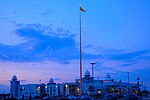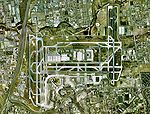Mississauga—Malton (federal electoral district)
2013 establishments in OntarioOntario federal electoral districtsPages with disabled graphsPolitics of MississaugaUse mdy dates from November 2021

Mississauga—Malton is a federal electoral district in Ontario. It encompasses a portion of Ontario previously included in the electoral districts of Bramalea—Gore—Malton, Mississauga—Brampton South and Mississauga—Streetsville.Mississauga—Malton was created by the 2012 federal electoral boundaries redistribution and was legally defined in the 2013 representation order. It came into effect upon the call of the 42nd Canadian federal election, scheduled for October 2015.
Excerpt from the Wikipedia article Mississauga—Malton (federal electoral district) (License: CC BY-SA 3.0, Authors, Images).Mississauga—Malton (federal electoral district)
Meyerside Drive, Mississauga
Geographical coordinates (GPS) Address Nearby Places Show on map
Geographical coordinates (GPS)
| Latitude | Longitude |
|---|---|
| N 43.655 ° | E -79.66 ° |
Address
Meyerside Drive 1194
L5T 1K8 Mississauga
Ontario, Canada
Open on Google Maps








